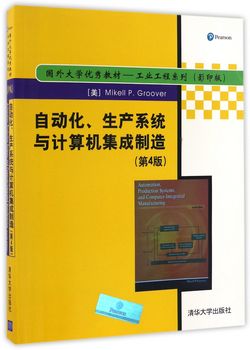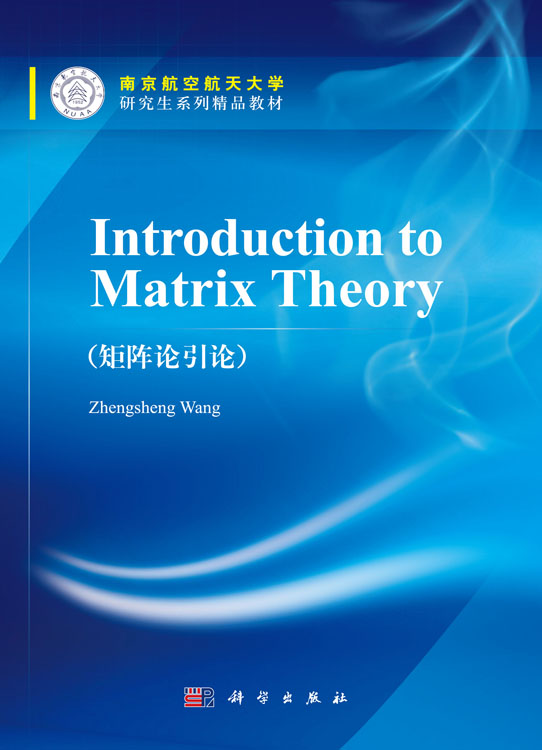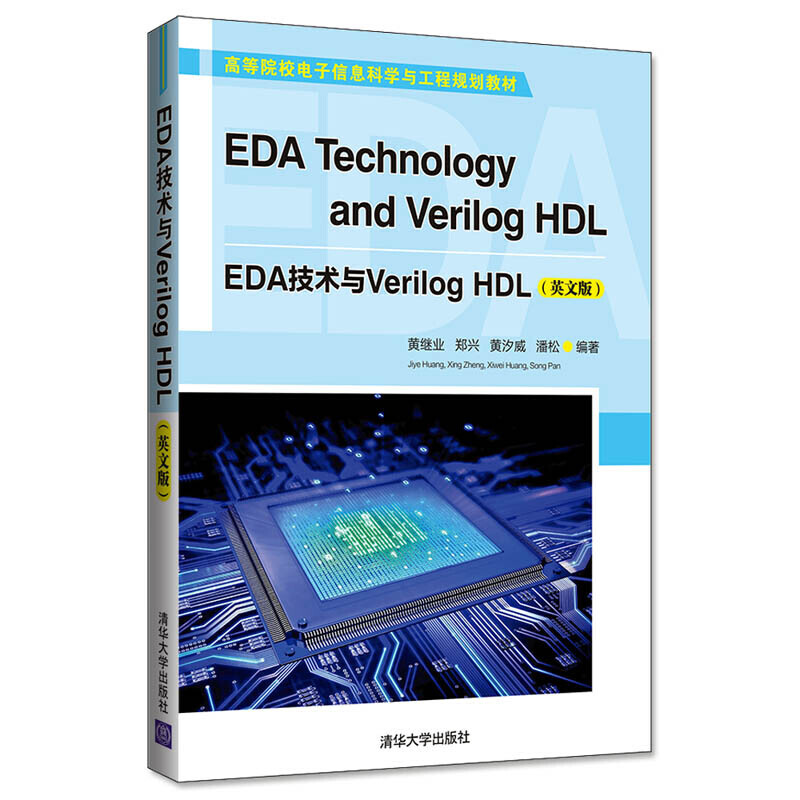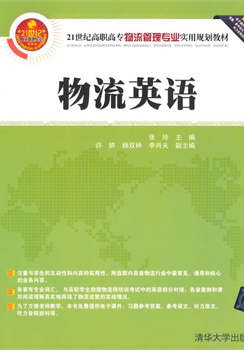自动化、生产系统与计算机集成制造(第4版) / 国外大学优秀教材·工业工程系列(影印版)
¥65.00定价
作者: [美]Mikell P.Groover
出版时间:2016-12
出版社:清华大学出版社
- 清华大学出版社
- 9787302456612
- 4-1
- 182438
- 16开
- 2016-12
- 工学
- 控制科学与工程
- TH166
- 机电类
内容简介
本教材系列的出版正值中国学术界工业工程学科经历巨大发展、实际工作中对工业工程的概念、方法和工具的使用兴趣日渐浓厚之时。在实际工作中有效地应用工业工程的手段将无疑会提高生产率、工作质量、合作的满意度和效果。
目录
Contents
Preface xi
Chapter 1 IntroduCtIon 1
1.1 Production Systems 2
1.2 Automation in Production Systems 6
1.3 Manual Labor in Production Systems 11
1.4 Automation Principles and Strategies 13
1.5 About This Book 18
Part I: overvIew of ManufaCturIng 21
Chapter 2 ManufaCturIng oPeratIons 21
2.1 Manufacturing Industries and Products 25
2.2 Manufacturing Operations 28
2.3 Production Facilities 32
2.4 Product/Production Relationships 37
Chapter 3 ManufaCturIng MetrICs and eConoMICs 46
3.1 Production Performance Metrics 47
3.2 Manufacturing Costs 59
APPENDIX 3A: Averaging Formulas for Equation (3.20) 73
Part II: autoMatIon and Control teChnologIes 75
Chapter 4 IntroduCtIon to autoMatIon 75
4.1 Basic Elements of an Automated System 78
4.2 Advanced Automation Functions 86
4.3 Levels of Automation 91
Chapter 5 IndustrIal Control systeMs 95
5.1 Process Industries versus Discrete Manufacturing Industries 96
5.2 Continuous versus Discrete Control 98
5.3 Computer Process Control 104
Chapter 6
Chapter 7
Chapter 8
Chapter 9
Part III:
Chapter 10
Chapter 11
Chapter 12
Contents
hardware CoMPonents for autoMatIon and ProCess Control 121
6.1 Sensors 122
6.2 Actuators 126
6.3 Analog–Digital Conversions 138
6.4 Input/Output Devices for Discrete Data 143
CoMPuter nuMerICal Control
149
7.1 Fundamentals of NC Technology 152
7.2 Computers and Numerical Control 158
7.3 Applications of NC 163
7.4 Analysis of Positioning Systems 170
7.5 NC Part Programming 178
APPENDIX 7A: Coding for Manual Part Programming 196
IndustrIal robotICs 204
8.1 Robot Anatomy and Related Attributes 206
8.2 Robot Control Systems 214
8.3 End Effectors 216
8.4 Applications of Industrial Robots 217
8.5 Robot Programming 226
8.6 Robot Accuracy and Repeatability 234
dIsCrete Control and PrograMMable logIC Controllers 244
9.1 Discrete Process Control 244
9.2 Ladder Logic Diagrams 252
9.3 Programmable Logic Controllers 256
9.4 Personal Computers and Programmable Automation Controllers 263
MaterIal handlIng and IdentIfICatIon 269
MaterIal transPort systeMs 269
10.1 Overview of Material Handling 270
10.2 Material Transport Equipment 275
10.3 Analysis of Material Transport Systems 291
storage systeMs 309
11.1 Introduction to Storage Systems 310
11.2 Conventional Storage Methods and Equipment 314
11.3 Automated Storage Systems 317
11.4 Analysis of Storage Systems 325
autoMatIC IdentIfICatIon and data CaPture
337
12.1 Overview of Automatic Identification Methods 338
12.2 Bar Code Technology 340
12.3 Radio Frequency Identification 347
12.4 Other AIDC Technologies 349
A01_GROO9612_04_SE_dd 6
18/06/14 7:41 PM
Contents vii
Part Iv: ManufaCturIng systeMs
353
Chapter 13 overvIew of ManufaCturIng systeMs
353
13.1 Components of a Manufacturing System 354
13.2 Types of Manufacturing Systems 359
Chapter 14 sIngle-statIon ManufaCturIng Cells
366
14.1 Single-Station Manned Cells 367
14.2 Single-Station Automated Cells 368
14.3 Applications of Single-Station Cells 377
14.4 Analysis of Single-Station Cells 377
Chapter 15 Manual asseMbly lInes 390
15.1 Fundamentals of Manual Assembly Lines 392
15.2 Analysis of Single-Model Assembly Lines 398
15.3 Line Balancing Algorithms 405
15.4 Workstation Details 411
15.5 Other Considerations in Assembly Line Design 413
15.6 Alternative Assembly Systems 416
APPENDIX 15A: Batch-Model and Mixed-Model Lines 426
Chapter 16 autoMated ProduCtIon lInes 441
16.1 Fundamentals of Automated Production Lines 442
16.2 Applications of Automated Production Lines 450
16.3 Analysis of Transfer Lines 454
APPENDIX 16A: Transfer Lines with Internal Storage 464
Chapter 17 autoMated asseMbly systeMs 472
17.1 Fundamentals of Automated Assembly Systems 473
17.2 Analysis of Automated Assembly Systems 479
Chapter 18 grouP teChnology and Cellular ManufaCturIng 497
18.1 Part Families and Machine Groups 499
18.2 Cellular Manufacturing 506
18.3 Applications of Group Technology 511
18.4 Analysis of Cellular Manufacturing 513
APPENDIX 18A: Opitz Parts Classification and Coding System 528
Chapter 19 flexIble ManufaCturIng Cells and systeMs 531
19.1 What Is a Flexible Manufacturing System? 533
19.2 FMC/FMS Components 538
19.3 FMS Application Considerations 545
19.4 Analysis of Flexible Manufacturing Systems 549
19.5 Alternative Approaches to Flexible Manufacturing 561
A01_GROO9612_04_SE_dd 7
Part v: QualIty Control systeMs
575
Chapter 20 QualIty PrograMs for ManufaCturIng
575
20.1 Quality in Design and Manufacturing 576
20.2 Traditional and Modern Quality Control 577
20.3 Process Variability and Process Capability 580
20.4 Statistical Process Control 583
20.5 Six Sigma 596
20.6 Taguchi Methods in Quality Engineering 600
20.7 ISO 9000 605
APPENDIX 20A: The Six Sigma DMAIC Procedure 612
Chapter 21 InsPeCtIon PrInCIPles and PraCtICes 618
21.1 Inspection Fundamentals 619
21.2 Sampling versus 100% Inspection 624
21.3 Automated Inspection 628
21.4 When and Where to Inspect 630
21.5 Analysis of Inspection Systems 634
Chapter 22 InsPeCtIon teChnologIes 647
22.1 Inspection Metrology 648
22.2 Conventional Measuring and Gaging Techniques 653
22.3 Coordinate Measuring Machines 653
22.4 Surface Measurement 665
22.5 Machine Vision 667
22.6 Other Optical Inspection Methods 674
22.7 Noncontact Nonoptical Inspection Techniques 677
APPENDIX 22A: Geometric Feature Construction 682
Part vI: ManufaCturIng suPPort systeMs 685
Chapter 23 ProduCt desIgn and Cad/CaM In the ProduCtIon systeM 685
23.1 Product Design and CAD 686
23.2 CAM, CAD/CAM, and CIM 693
23.3 Quality Function Deployment 697
Chapter 24 ProCess PlannIng and ConCurrent engIneerIng 703
24.1 Process Planning 704
24.2 Computer-Aided Process Planning 709
24.3 Concurrent Engineering and Design for Manufacturing 712
24.4 Advanced Manufacturing Planning 716
A01_GROO9612_04_SE_dd 8
Chapter 25 ProduCtIon PlannIng and Control systeMs
721
25.1 Aggregate Production Planning and the Master Production Schedule 723
25.2 Material Requirements Planning 725
25.3 Capacity Planning 731
25.4 Shop Floor Control 733
25.5 Inventory Control 739
25.6 Manufacturing Resource Planning (MRP II) 743
25.7 Enterprise Resource Planning (ERP) 744
Chapter 26 Just-In-tIMe and lean ProduCtIon 750
26.1 Lean Production and Waste in Manufacturing 751
26.2 Just-In-Time Production Systems 755
26.3 Autonomation 762
26.4 Worker Involvement 766
appendix: answers to selected Problems 776
Index 782
Preface xi
Chapter 1 IntroduCtIon 1
1.1 Production Systems 2
1.2 Automation in Production Systems 6
1.3 Manual Labor in Production Systems 11
1.4 Automation Principles and Strategies 13
1.5 About This Book 18
Part I: overvIew of ManufaCturIng 21
Chapter 2 ManufaCturIng oPeratIons 21
2.1 Manufacturing Industries and Products 25
2.2 Manufacturing Operations 28
2.3 Production Facilities 32
2.4 Product/Production Relationships 37
Chapter 3 ManufaCturIng MetrICs and eConoMICs 46
3.1 Production Performance Metrics 47
3.2 Manufacturing Costs 59
APPENDIX 3A: Averaging Formulas for Equation (3.20) 73
Part II: autoMatIon and Control teChnologIes 75
Chapter 4 IntroduCtIon to autoMatIon 75
4.1 Basic Elements of an Automated System 78
4.2 Advanced Automation Functions 86
4.3 Levels of Automation 91
Chapter 5 IndustrIal Control systeMs 95
5.1 Process Industries versus Discrete Manufacturing Industries 96
5.2 Continuous versus Discrete Control 98
5.3 Computer Process Control 104
Chapter 6
Chapter 7
Chapter 8
Chapter 9
Part III:
Chapter 10
Chapter 11
Chapter 12
Contents
hardware CoMPonents for autoMatIon and ProCess Control 121
6.1 Sensors 122
6.2 Actuators 126
6.3 Analog–Digital Conversions 138
6.4 Input/Output Devices for Discrete Data 143
CoMPuter nuMerICal Control
149
7.1 Fundamentals of NC Technology 152
7.2 Computers and Numerical Control 158
7.3 Applications of NC 163
7.4 Analysis of Positioning Systems 170
7.5 NC Part Programming 178
APPENDIX 7A: Coding for Manual Part Programming 196
IndustrIal robotICs 204
8.1 Robot Anatomy and Related Attributes 206
8.2 Robot Control Systems 214
8.3 End Effectors 216
8.4 Applications of Industrial Robots 217
8.5 Robot Programming 226
8.6 Robot Accuracy and Repeatability 234
dIsCrete Control and PrograMMable logIC Controllers 244
9.1 Discrete Process Control 244
9.2 Ladder Logic Diagrams 252
9.3 Programmable Logic Controllers 256
9.4 Personal Computers and Programmable Automation Controllers 263
MaterIal handlIng and IdentIfICatIon 269
MaterIal transPort systeMs 269
10.1 Overview of Material Handling 270
10.2 Material Transport Equipment 275
10.3 Analysis of Material Transport Systems 291
storage systeMs 309
11.1 Introduction to Storage Systems 310
11.2 Conventional Storage Methods and Equipment 314
11.3 Automated Storage Systems 317
11.4 Analysis of Storage Systems 325
autoMatIC IdentIfICatIon and data CaPture
337
12.1 Overview of Automatic Identification Methods 338
12.2 Bar Code Technology 340
12.3 Radio Frequency Identification 347
12.4 Other AIDC Technologies 349
A01_GROO9612_04_SE_dd 6
18/06/14 7:41 PM
Contents vii
Part Iv: ManufaCturIng systeMs
353
Chapter 13 overvIew of ManufaCturIng systeMs
353
13.1 Components of a Manufacturing System 354
13.2 Types of Manufacturing Systems 359
Chapter 14 sIngle-statIon ManufaCturIng Cells
366
14.1 Single-Station Manned Cells 367
14.2 Single-Station Automated Cells 368
14.3 Applications of Single-Station Cells 377
14.4 Analysis of Single-Station Cells 377
Chapter 15 Manual asseMbly lInes 390
15.1 Fundamentals of Manual Assembly Lines 392
15.2 Analysis of Single-Model Assembly Lines 398
15.3 Line Balancing Algorithms 405
15.4 Workstation Details 411
15.5 Other Considerations in Assembly Line Design 413
15.6 Alternative Assembly Systems 416
APPENDIX 15A: Batch-Model and Mixed-Model Lines 426
Chapter 16 autoMated ProduCtIon lInes 441
16.1 Fundamentals of Automated Production Lines 442
16.2 Applications of Automated Production Lines 450
16.3 Analysis of Transfer Lines 454
APPENDIX 16A: Transfer Lines with Internal Storage 464
Chapter 17 autoMated asseMbly systeMs 472
17.1 Fundamentals of Automated Assembly Systems 473
17.2 Analysis of Automated Assembly Systems 479
Chapter 18 grouP teChnology and Cellular ManufaCturIng 497
18.1 Part Families and Machine Groups 499
18.2 Cellular Manufacturing 506
18.3 Applications of Group Technology 511
18.4 Analysis of Cellular Manufacturing 513
APPENDIX 18A: Opitz Parts Classification and Coding System 528
Chapter 19 flexIble ManufaCturIng Cells and systeMs 531
19.1 What Is a Flexible Manufacturing System? 533
19.2 FMC/FMS Components 538
19.3 FMS Application Considerations 545
19.4 Analysis of Flexible Manufacturing Systems 549
19.5 Alternative Approaches to Flexible Manufacturing 561
A01_GROO9612_04_SE_dd 7
Part v: QualIty Control systeMs
575
Chapter 20 QualIty PrograMs for ManufaCturIng
575
20.1 Quality in Design and Manufacturing 576
20.2 Traditional and Modern Quality Control 577
20.3 Process Variability and Process Capability 580
20.4 Statistical Process Control 583
20.5 Six Sigma 596
20.6 Taguchi Methods in Quality Engineering 600
20.7 ISO 9000 605
APPENDIX 20A: The Six Sigma DMAIC Procedure 612
Chapter 21 InsPeCtIon PrInCIPles and PraCtICes 618
21.1 Inspection Fundamentals 619
21.2 Sampling versus 100% Inspection 624
21.3 Automated Inspection 628
21.4 When and Where to Inspect 630
21.5 Analysis of Inspection Systems 634
Chapter 22 InsPeCtIon teChnologIes 647
22.1 Inspection Metrology 648
22.2 Conventional Measuring and Gaging Techniques 653
22.3 Coordinate Measuring Machines 653
22.4 Surface Measurement 665
22.5 Machine Vision 667
22.6 Other Optical Inspection Methods 674
22.7 Noncontact Nonoptical Inspection Techniques 677
APPENDIX 22A: Geometric Feature Construction 682
Part vI: ManufaCturIng suPPort systeMs 685
Chapter 23 ProduCt desIgn and Cad/CaM In the ProduCtIon systeM 685
23.1 Product Design and CAD 686
23.2 CAM, CAD/CAM, and CIM 693
23.3 Quality Function Deployment 697
Chapter 24 ProCess PlannIng and ConCurrent engIneerIng 703
24.1 Process Planning 704
24.2 Computer-Aided Process Planning 709
24.3 Concurrent Engineering and Design for Manufacturing 712
24.4 Advanced Manufacturing Planning 716
A01_GROO9612_04_SE_dd 8
Chapter 25 ProduCtIon PlannIng and Control systeMs
721
25.1 Aggregate Production Planning and the Master Production Schedule 723
25.2 Material Requirements Planning 725
25.3 Capacity Planning 731
25.4 Shop Floor Control 733
25.5 Inventory Control 739
25.6 Manufacturing Resource Planning (MRP II) 743
25.7 Enterprise Resource Planning (ERP) 744
Chapter 26 Just-In-tIMe and lean ProduCtIon 750
26.1 Lean Production and Waste in Manufacturing 751
26.2 Just-In-Time Production Systems 755
26.3 Autonomation 762
26.4 Worker Involvement 766
appendix: answers to selected Problems 776
Index 782









